History
 A lot of people think that a day like Valentine’s Day is simply a commercialized day to get people to part with their money, and maybe to a degree it is, but why not have a day to celebrate love. Our world seems to get more and more filled with hate every day, so maybe we really do need to had a day to celebrate love. A person doesn’t have to have a boyfriend, girlfriend, husband, or wife to celebrate love either, because your valentine could just as easily be your kids, grandkids, nieces, nephews, or friends too. All it takes is to have someone you truly care about. In fact, it’s even ok to have multiple valentines too. In my family, it has always been tradition for our parents to give valentines to all the kids and grandkids, and my sisters and I have continued the tradition. Our kids and grandkids always had a valentine, because after all love takes many forms, not just romantic love. They can even be from brothers, and sent on a day that isn’t even Valentine’s Day.
A lot of people think that a day like Valentine’s Day is simply a commercialized day to get people to part with their money, and maybe to a degree it is, but why not have a day to celebrate love. Our world seems to get more and more filled with hate every day, so maybe we really do need to had a day to celebrate love. A person doesn’t have to have a boyfriend, girlfriend, husband, or wife to celebrate love either, because your valentine could just as easily be your kids, grandkids, nieces, nephews, or friends too. All it takes is to have someone you truly care about. In fact, it’s even ok to have multiple valentines too. In my family, it has always been tradition for our parents to give valentines to all the kids and grandkids, and my sisters and I have continued the tradition. Our kids and grandkids always had a valentine, because after all love takes many forms, not just romantic love. They can even be from brothers, and sent on a day that isn’t even Valentine’s Day.
When I look back on all the years of valentines from the time I was just a little girl, through the grade school  years, to boyfriends, and on the my family, I must say that other that valentines from my husband, Bob, none were a sweet as those to me from my parents, and I hope my children feel the same way. I guess it’s like most of the boyfriends, that never measured up. You think that certain things are so important, like having a boyfriend for Valentine’s Day. As a teenager, that seems like the most important thing, and if you don’t have one, you feel like the loser of the year. Nevertheless, later on in life, you realize that all those years, all those boyfriends…or the lack thereof, meant nothing. Those boyfriends weren’t the ones who stayed with you. Their gifts were nothing more that cheap glitter, even when placed next to the smallest, most inexpensive gift from the one who really loves you and has chosen to spend the rest of their lives with you. Just the gift of self from someone who really loves you, boyfriend or husband…well, it makes the others look like dirt, even if they cost more, because cost has little to do with it.
years, to boyfriends, and on the my family, I must say that other that valentines from my husband, Bob, none were a sweet as those to me from my parents, and I hope my children feel the same way. I guess it’s like most of the boyfriends, that never measured up. You think that certain things are so important, like having a boyfriend for Valentine’s Day. As a teenager, that seems like the most important thing, and if you don’t have one, you feel like the loser of the year. Nevertheless, later on in life, you realize that all those years, all those boyfriends…or the lack thereof, meant nothing. Those boyfriends weren’t the ones who stayed with you. Their gifts were nothing more that cheap glitter, even when placed next to the smallest, most inexpensive gift from the one who really loves you and has chosen to spend the rest of their lives with you. Just the gift of self from someone who really loves you, boyfriend or husband…well, it makes the others look like dirt, even if they cost more, because cost has little to do with it.
Beyond the romantic valentines, comes the family valentines. Those family valentines, even if they cost just 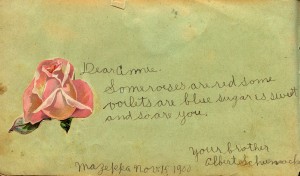 pennies…or nothing at all…are worth really, solid gold. Drawings done by your babies in pre-school or Kindergarten, are simply priceless, because they come from the best that is in your children, and they portray the love they have for their parents. When they are grown and out of your house, those little echoes of their younger years will be beautifully enhanced by things like valentines drawings done when they where little more than babies. Valentine’s Day is for lovers, it’s true, but some of the sweetest valentines are those that cost nothing, but are worth millions because they were sent with more love that anything that was purchased. Happy Valentine’s Day to all!! I hope your day is filled with true love.
pennies…or nothing at all…are worth really, solid gold. Drawings done by your babies in pre-school or Kindergarten, are simply priceless, because they come from the best that is in your children, and they portray the love they have for their parents. When they are grown and out of your house, those little echoes of their younger years will be beautifully enhanced by things like valentines drawings done when they where little more than babies. Valentine’s Day is for lovers, it’s true, but some of the sweetest valentines are those that cost nothing, but are worth millions because they were sent with more love that anything that was purchased. Happy Valentine’s Day to all!! I hope your day is filled with true love.
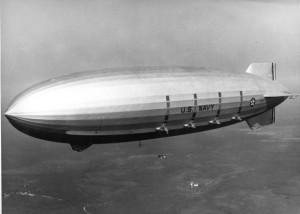
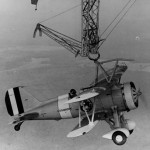 I think most of us have heard of the Hindenburg…the hydrogen filled blimp like airship the crashed in a ball of fire on May 6, 1937, bringing with it a loss of 36 lives…amazing when you consider that there were 97 people on board when that ball of fire crashed. What many people may not know is that the Hindenburg was not the only hydrogen powered airship. The USS Macon (ARS-5), named for Macon, Georgia and operated by the United States Navy for scouting and served as a “flying aircraft carrier” as well. It was designed to carry biplane parasite aircraft. Macon held single seat Curtiss F9C Sparrowhawks for scouting or two seat Fleet N2Y-1 for training. The Macon was a little under 20 feet shorter than the Hindenburg. The USS Macon also had a sister ship…the USS Akron (ARS-4).
I think most of us have heard of the Hindenburg…the hydrogen filled blimp like airship the crashed in a ball of fire on May 6, 1937, bringing with it a loss of 36 lives…amazing when you consider that there were 97 people on board when that ball of fire crashed. What many people may not know is that the Hindenburg was not the only hydrogen powered airship. The USS Macon (ARS-5), named for Macon, Georgia and operated by the United States Navy for scouting and served as a “flying aircraft carrier” as well. It was designed to carry biplane parasite aircraft. Macon held single seat Curtiss F9C Sparrowhawks for scouting or two seat Fleet N2Y-1 for training. The Macon was a little under 20 feet shorter than the Hindenburg. The USS Macon also had a sister ship…the USS Akron (ARS-4).
The USS Macon was in service less than two years, when on February 12, 1935 it was damaged in a storm and crashed off California’s Big Sur coast. Most of the crew was saved, and the wreckage remains on the ocean floor. The site of the wreckage remains on the United States National Register of Historic Places. I find myself interested in things like shipwrecks and plane crashes, but the ones underwater are especially interesting, because they are so inaccessible to most people. The USS Macon, like the Hindenburg proved not to be the best choice of an airship. There were really to many conditions that could easily bring them down. And the fact that they contained so much helium made then a flying bomb, in all reality. I don’t suppose that was something they considered when making these machines, but I’m sure it later became the reason that they discontinues this type of airship. I find it quite sad that it too two crashes to realize that they were not the safest way to fly.
I suppose they served their purpose though. I think it’s amazing that they could actually carry a plane on a hook and let it take off from the air. Launching and recovery from the airship in flight was done using a skyhook. The Sparrowhawk had a hook mounted above its top wing that attached to the cross-bar of a trapeze mounted on the carrier airship. For launching, the trapeze was lowered clear of the hull into the moving airship’s slipstream. With engine running, the Sparrowhawk would then disengage its hook and fall away from the airship. For recovery, the biplane would fly underneath the airship, until it was beneath the trapeze. The 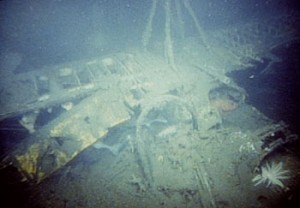
 pilot would climb up from below, and hook onto the cross-bar. Once the Sparrowhawk was secure, it could be hoisted by the trapeze back within the airship’s hull, the engine was cut as it passed the hangar door. To me, this seems like a tricky maneuver, but the pilots soon learned the technique and said it was much easier than landing on a moving aircraft carrier. Soon, the pilots acquired the nickname “The men on the Flying Trapeze” and their aircraft were decorated with appropriate emblems. Now to me…that is cool!!
pilot would climb up from below, and hook onto the cross-bar. Once the Sparrowhawk was secure, it could be hoisted by the trapeze back within the airship’s hull, the engine was cut as it passed the hangar door. To me, this seems like a tricky maneuver, but the pilots soon learned the technique and said it was much easier than landing on a moving aircraft carrier. Soon, the pilots acquired the nickname “The men on the Flying Trapeze” and their aircraft were decorated with appropriate emblems. Now to me…that is cool!!
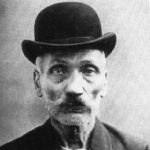
 Have you ever been an accomplice to a robbery? Would you ever? No…are you sure? I’m sure that’s what a squad of German soldiers in 1906 thought too, but they were wrong. In fact, I’m sure that those soldiers never dreamed that it could happen to them.
Have you ever been an accomplice to a robbery? Would you ever? No…are you sure? I’m sure that’s what a squad of German soldiers in 1906 thought too, but they were wrong. In fact, I’m sure that those soldiers never dreamed that it could happen to them.
On October 17, 1906, German shoemaker, Wilhelm Voigt, aged 57, had a plan. Voigt dressed up as a German Army officer, walked up to a squad of German soldiers in Tegel, Germany and told them to follow him. Voigt, who had a long criminal history, exploited the soldiers blind obedience to authority, and got them to assist him in his outlandish robbery. Tegel is a suburb of Berlin, but Voigt took the men 20 miles to the town of Köpenick.
After lunch, he put the men in position and stormed into the mayor’s office. Declaring that the mayor was under arrest, Voigt commanded the troops to take him into custody. He then demanded to see the cash box 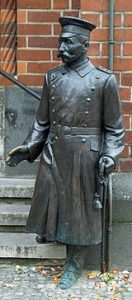
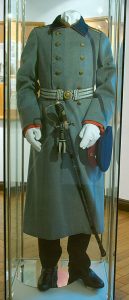 and confiscated the 4,000 marks inside. The mayor was put in a car, and Voigt ordered that he be delivered to the police in Berlin. On the way to Berlin, Voigt managed to disappear with the money. Still, it took more than a few hours at the police station before everyone realized that it was all a hoax. While 4,000 marks might not seem like very much, it would total about $62,000 in US currency today, so it wasn’t just a petty theft.
and confiscated the 4,000 marks inside. The mayor was put in a car, and Voigt ordered that he be delivered to the police in Berlin. On the way to Berlin, Voigt managed to disappear with the money. Still, it took more than a few hours at the police station before everyone realized that it was all a hoax. While 4,000 marks might not seem like very much, it would total about $62,000 in US currency today, so it wasn’t just a petty theft.
The caper was a huge embarrassment to the German Army, but the Kaiser thought the story was quite funny. The Army put together a massive manhunt, and found Voigt in Berlin a few days later. He was given a 4 year sentence for the theft, but the Kaiser pulled some strings and reduced the sentence to two years. Somehow, Voigt wound up being a folk hero for the rest of his life. He started wearing his uniform and posing for pictures for years. He was known as the Captain of Köpenick. I don’t suppose that the men and women in our Army today would think that they would be fooled in such a fashion, but seriously, if someone wearing a proper captain’s uniform said to follow him, I have to wonder just how many of today’s soldiers would dare to disobey that order.
 These days, when a new president makes the move from their current home to the White House, it is a huge production. Very little of the packing is actually done by the first family. Things were much different in 1861, when President Abraham Lincoln was moving to Washington DC. When Abraham Lincoln moved to Washington DC, he packed his family’s belongings himself. His wife Mary was in Saint Louis on a shopping trip, so she would join him later in Indiana. It was on this day, February 11, 1861 that Abraham Lincoln boarded a two car private train…probably the only special thing about this transition. After an emotional speech to his fellow Springfield, Illinois citizens, Abraham Lincoln moved to Washington DC. The day was cold and rainy…much like the mood as Lincoln left his friends. He spoke to a crowd before departing: “Here I have lived a quarter of a century, and have passed from a young man to an old man. Here my children have been born, and one is buried. I now leave, not knowing when, or whether ever, I may return, with a task before me greater than that which rested upon Washington. Without the assistance of that Divine Being…I cannot
These days, when a new president makes the move from their current home to the White House, it is a huge production. Very little of the packing is actually done by the first family. Things were much different in 1861, when President Abraham Lincoln was moving to Washington DC. When Abraham Lincoln moved to Washington DC, he packed his family’s belongings himself. His wife Mary was in Saint Louis on a shopping trip, so she would join him later in Indiana. It was on this day, February 11, 1861 that Abraham Lincoln boarded a two car private train…probably the only special thing about this transition. After an emotional speech to his fellow Springfield, Illinois citizens, Abraham Lincoln moved to Washington DC. The day was cold and rainy…much like the mood as Lincoln left his friends. He spoke to a crowd before departing: “Here I have lived a quarter of a century, and have passed from a young man to an old man. Here my children have been born, and one is buried. I now leave, not knowing when, or whether ever, I may return, with a task before me greater than that which rested upon Washington. Without the assistance of that Divine Being…I cannot 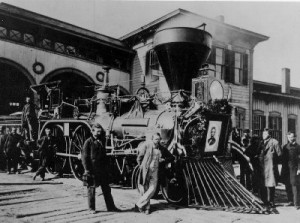 succeed. With that assistance, I cannot fail. To His care commending you, as I hope in your prayers you will commend me, I bid you an affectionate farewell.” One of the people who attended the speech, said that the president-elect’s “breast heaved with emotion and he could scarcely command his feelings.”
succeed. With that assistance, I cannot fail. To His care commending you, as I hope in your prayers you will commend me, I bid you an affectionate farewell.” One of the people who attended the speech, said that the president-elect’s “breast heaved with emotion and he could scarcely command his feelings.”
It’s hard to say if Lincoln had an inkling that he was not just saying “goodbye for now” to the citizens of Springfield, Illinois, or not, but there is no doubt that he knew that his presidency was going to be difficult…to say the least. Since his election, seven southern states has seceded from the Union. The nation was in the middle of a national crisis. President Lincoln knew that the nation was quite likely heading for a civil war. In short order, he was proven to be correct, when our nation embarked on one of the most bitter wars it ever fought…waged against its own people, over slavery.
When Lincoln said that it was possible that he would never return to Springfield, he was ironically very correct. 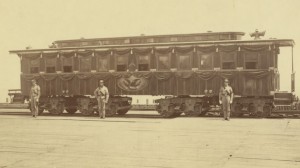 While he returned in body, he did not return in life…as we all know, because he was shot by John Wilkes Booth on April 14, 1865, and died at 7:22am the morning of April 15, 1865. Booth opposed Lincoln’s freeing of the slaves, and maybe felt like killing him would somehow change that. Of course, it did not. After his passing, Lincoln’s body made a two week train trip back to Springfield, Illinois for burial, taking a route that would allow the people to pay tribute along the way. Memorial services were held at different towns when the train passed through them. It was the only time he rode in the new private train car that had been built just for him.
While he returned in body, he did not return in life…as we all know, because he was shot by John Wilkes Booth on April 14, 1865, and died at 7:22am the morning of April 15, 1865. Booth opposed Lincoln’s freeing of the slaves, and maybe felt like killing him would somehow change that. Of course, it did not. After his passing, Lincoln’s body made a two week train trip back to Springfield, Illinois for burial, taking a route that would allow the people to pay tribute along the way. Memorial services were held at different towns when the train passed through them. It was the only time he rode in the new private train car that had been built just for him.
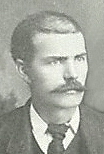 My husband, Bob Schulenberg’s 2nd great grandfather, Benjamin Franklin DeGood was a blacksmith in Galena, Kansas in 1900. He and his two oldest sons ran the business together, as often happened in families. If the parents were farmers, often so were the children. So in this case, because their dad was a blacksmith, William and Clyde grew up in the trade, and began working with him. In 1900, Galena was a town of 10,155 people…the largest population it had before or after that time. The railroad established the territory of Galena in 1871, but the town wasn’t established until the discovery of lead there in the spring of 1877. As with any mining operation back then, there were other occupations that became necessary, blacksmiths being one of them.
My husband, Bob Schulenberg’s 2nd great grandfather, Benjamin Franklin DeGood was a blacksmith in Galena, Kansas in 1900. He and his two oldest sons ran the business together, as often happened in families. If the parents were farmers, often so were the children. So in this case, because their dad was a blacksmith, William and Clyde grew up in the trade, and began working with him. In 1900, Galena was a town of 10,155 people…the largest population it had before or after that time. The railroad established the territory of Galena in 1871, but the town wasn’t established until the discovery of lead there in the spring of 1877. As with any mining operation back then, there were other occupations that became necessary, blacksmiths being one of them.
Benjamin and his family were living in Nebraska, when Bob’s great grandmother, Nellie DeGood Knox was born in Springfield on October 6, 1887, but by the birth of her younger brother Ernest on December 31, 1892 the family was living in Columbus, Kansas. By the December 9, 1898 birth of Benjamin’s youngest daughter, Beulah, the family was living in Galena, Kansas. Then in the 1900 census, Benjamin and his two eldest sons had a blacksmith shop in Galena.
I have to wonder what it was like to be a blacksmith in the 1900s. Cars had made their first appearance on the scene in 1893, and while I’m sure many people were sure they were a passing fad that was less than safe. It’s also quite possible that they were too expensive for the average person, but as a blacksmith, I have to wonder if Benjamin could see the writing on the wall. The days of the blacksmith having steady work were numbered. Nevertheless, he had to continue to do the job he knew as long as there was work to do.
At some point after the untimely deaths of Benjamin’s youngest daughter, Buelah and son, 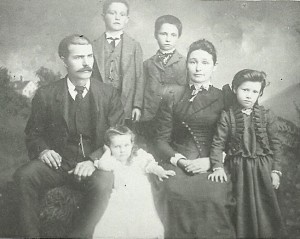 Theodore, both of whom died as young children, and possibly because of the declining need for blacksmith services, or maybe due to declining health, Benjamin moved the family that was still at home, to Polk, Missouri. I have not found any real indication of declining health, but given the fact that blacksmiths in those days were exposed to asbestos, before we knew of the dangers, I have to think that a man who dies at 58 years of age, even as early as 1907, must have had something major going on. Lung diseases caused by asbestos would definitely qualify. I would think that the life of a blacksmith would be a hard one in every way, and when it brought with it an early death due to the occupational health hazards, it became an occupation I wouldn’t want my kids to go into…even if it was the family business.
Theodore, both of whom died as young children, and possibly because of the declining need for blacksmith services, or maybe due to declining health, Benjamin moved the family that was still at home, to Polk, Missouri. I have not found any real indication of declining health, but given the fact that blacksmiths in those days were exposed to asbestos, before we knew of the dangers, I have to think that a man who dies at 58 years of age, even as early as 1907, must have had something major going on. Lung diseases caused by asbestos would definitely qualify. I would think that the life of a blacksmith would be a hard one in every way, and when it brought with it an early death due to the occupational health hazards, it became an occupation I wouldn’t want my kids to go into…even if it was the family business.
 This year’s Super Bowl game will the historic 50th Super Bowl. That’s a milestone by any standard. That made me start thinking about the origins of the Super Bowl. Now I’m sure that most men can tell me all about it, but let me see if I can tell them something they didn’t know. The Super Bowl is the championship game played annually between the AFC (American Football Conference) and the NFC (National Football Conference). It must be played at a different stadium each year. As most of us know, it is the most watched professional sports event in the United States. The Super Bowl even draws the football widows in to watch the game…and the Super Bowl is the game that sometimes, as in my case, turns a football widow into a football fan. It has been likened to a national holiday. The half-time show is performed by popular musicians and singers and the only day in which more food is consumed…is Thanksgiving. I’m sure many of you knew or could guess all that.
This year’s Super Bowl game will the historic 50th Super Bowl. That’s a milestone by any standard. That made me start thinking about the origins of the Super Bowl. Now I’m sure that most men can tell me all about it, but let me see if I can tell them something they didn’t know. The Super Bowl is the championship game played annually between the AFC (American Football Conference) and the NFC (National Football Conference). It must be played at a different stadium each year. As most of us know, it is the most watched professional sports event in the United States. The Super Bowl even draws the football widows in to watch the game…and the Super Bowl is the game that sometimes, as in my case, turns a football widow into a football fan. It has been likened to a national holiday. The half-time show is performed by popular musicians and singers and the only day in which more food is consumed…is Thanksgiving. I’m sure many of you knew or could guess all that.
So, what brought on the need for a Super Bowl in the first place? It was a result of the NFL (National Football League) merging with the AFL (American Football League). The NFL fought for dominance in the professional  sport, fending off several professional leagues, including the AFL. The fierce competition for players finally led to merger talks in 1966. On June 8, 1966, the merger was announced, the winner of each league’s champion would meet in a final game to determine the world champions. Of course, that game would need a name. AFL founder and Kansas City Chiefs owner Lamar Hunt jokingly referred to the proposed game as the Super Bowl, after watching a group of kids play with a toy called a Super Ball. The name was consistent with college “bowl” games, and became the permanent name of the football championship game.
sport, fending off several professional leagues, including the AFL. The fierce competition for players finally led to merger talks in 1966. On June 8, 1966, the merger was announced, the winner of each league’s champion would meet in a final game to determine the world champions. Of course, that game would need a name. AFL founder and Kansas City Chiefs owner Lamar Hunt jokingly referred to the proposed game as the Super Bowl, after watching a group of kids play with a toy called a Super Ball. The name was consistent with college “bowl” games, and became the permanent name of the football championship game.
Since the first two Super Bowl games were completely dominated by the NFL’s Green Bay Packers, there were doubts as to whether or not the AFL was an inferior league. All that changed the third year when the AFL’s New York Jets defeated the Baltimore Colts in Super Bowl III. The following year, another AFL team, the Kansas City Chiefs won the game against the Minnesota Vikings to put the two leagues at a tie for games won. Super Bowl IV was the last championship played between the two leagues. After that the two sides were called the AFC (American Football Conference) and the NFC (National Football Conference), but the championship game would  continue. The trophy that is given to the winning team at the Super Bowl is called the Vince Lombardi Trophy, named after the coach of the Green Bay Packers who won those first two Super Bowl games. It was first given to the Baltimore Colts at Super Bowl V.
continue. The trophy that is given to the winning team at the Super Bowl is called the Vince Lombardi Trophy, named after the coach of the Green Bay Packers who won those first two Super Bowl games. It was first given to the Baltimore Colts at Super Bowl V.
This year’s Super Bowl game will be held at Levi’s Stadium in Santa Clara, California. The teams playing are the Denver Broncos and the Carolina Panthers. That makes it especially exciting for me, because the Broncos are my team. The Panthers are good team too. This game could prove to be a nail biter, so hold onto your seat…the game is on!! By the way…did I tell you something you didn’t know before?
 In this day of the internet, cell phones, television, and radio, a new form of patriotism has emerged. The rights our American soldiers fought for are in peril. In a year in which many Americans were offended by literally everything, and the internet, specifically Facebook, has become one of the greatest sounding boards there is, everyone has stepped up to the plate to state their views and yes, even to hear the views of others. Of course, hearing the views of other people, is not always something that is well received. Sometimes, people lose sight of the fact that since we each own our own Facebook page, we also have the right to say what we want to say. Others may not agree, but that doesn’t matter, because this is our page…our right to free speech.
In this day of the internet, cell phones, television, and radio, a new form of patriotism has emerged. The rights our American soldiers fought for are in peril. In a year in which many Americans were offended by literally everything, and the internet, specifically Facebook, has become one of the greatest sounding boards there is, everyone has stepped up to the plate to state their views and yes, even to hear the views of others. Of course, hearing the views of other people, is not always something that is well received. Sometimes, people lose sight of the fact that since we each own our own Facebook page, we also have the right to say what we want to say. Others may not agree, but that doesn’t matter, because this is our page…our right to free speech.

Of course, people with differing views have the right to challenge our views…to state their own case, as it were, but they don’t have the right to challenge our right to speak our own opinion on our own page. If we are offended by the views of another person, we need to move past the post. Never is this more evident than when the opinions of one person in a family offends another, and they decided to take things to the next level…unfriending. I won’t do that, because while I will state my opinion, and I will respect the rights of my friends to post what they choose, and to debate my opinion, the family connection is far too important to me to argue in 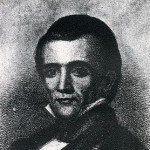 such a way.
such a way.
In history, patriots had to go to the place they were going to protest. And of course, by the time they could get there, it was probably too late to protest. I suppose maybe our politicians were more honest back then, or maybe we just didn’t know all that was going on. It has been said that some presidents would never have been elected if we could have seen them. That is so true, and sometimes I think maybe that should be how it is today. If race, gender, and maybe even party affiliation weren’t able to be seen, who would we elect? That might be something to think about. Maybe we need to stop giving a pass because of race or gender, and make the politicians do what’s right.
 I can’t think of Groundhogs Day without thinking of my husband, Bob’s grandmother, Vina Leary Schulenberg Hein, who was born on that day. I don’t suppose that first Groundhog’s Day mattered much to her or to her parents. They were too busy having a new baby to think about whether or not it would be an early spring. I think later on though, Grandma liked sharing her birthday with Groundhog’s Day…at least we all knew that she thought it was special, because she did mention it a few times.
I can’t think of Groundhogs Day without thinking of my husband, Bob’s grandmother, Vina Leary Schulenberg Hein, who was born on that day. I don’t suppose that first Groundhog’s Day mattered much to her or to her parents. They were too busy having a new baby to think about whether or not it would be an early spring. I think later on though, Grandma liked sharing her birthday with Groundhog’s Day…at least we all knew that she thought it was special, because she did mention it a few times.
Groundhog’s Day is one I have a love/hate relationship with. If the groundhog predicts an early Spring, I love the day, but if he predicts six more weeks of winter…I want to slap him. By February, I think most people are ready for Spring to arrive…my sister, Cheryl Masterson being the exception to that rule. Since she loves Winter, the thought of an early Spring is reason to slap the groundhog, but if he promises an early Spring, I’ll gladly protect him from my sister. So fear not Punxsutawney Phil…I’ll save you. If you predict an early Spring, that is. If not…watch out for me!!
Bob’s grandmother would have been 107 this Groundhog’s Day…if she were still with us. I miss her a lot. I was always short on grandparents, because my dad’s dad passed away before my parents were married, and my dad’s mom passed away when I was six months old. Growing up, all we had were my mom’s parents, and they were both gone by 1988. By 2004 all the grandparents were gone, and I miss each and every one of them. I was grateful to have Bob’s grandparents to be my own too. They always made me feel welcome.
 Every year as Groundhog’s Day approaches, I find myself looking for the upcoming weather reports for Punxsutawney, Pennsylvania, since that is where Punxsutawney Phil lives. I have often wondered how a groundhog in Pennsylvania could predict the coming Spring in Wyoming, but they say he does. Nevertheless, every time he predicts six more weeks of Winter, I hope he fails in that years prediction. They say he is never wrong, but I think he certainly could be…especially when we have cloudy weather here, so seeing his shadow would not be an option here. This year they predict partly cloudy weather for Punxsutawney, Pennsylvania, so an early Spring doesn’t seem likely, but I can dream can’t I. Today would have been Grandma Hein’s 107th Groundhog Birthday. Happy birthday in Heaven Grandma. We love and miss you very much.
Every year as Groundhog’s Day approaches, I find myself looking for the upcoming weather reports for Punxsutawney, Pennsylvania, since that is where Punxsutawney Phil lives. I have often wondered how a groundhog in Pennsylvania could predict the coming Spring in Wyoming, but they say he does. Nevertheless, every time he predicts six more weeks of Winter, I hope he fails in that years prediction. They say he is never wrong, but I think he certainly could be…especially when we have cloudy weather here, so seeing his shadow would not be an option here. This year they predict partly cloudy weather for Punxsutawney, Pennsylvania, so an early Spring doesn’t seem likely, but I can dream can’t I. Today would have been Grandma Hein’s 107th Groundhog Birthday. Happy birthday in Heaven Grandma. We love and miss you very much.

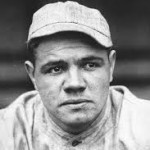 Since I was a kid, I have liked the game of baseball. Our parents, Allen and Collene Spencer, figured that with five girls, they had enough for a makeshift game of baseball whenever we went camping, and we all usually liked to play. That was really my first experience with baseball and with sports of any kind, I guess. I was not destined to become some great player, nor did I have any big aspirations in that area, because my interests went a different direction as I grew up. Nevertheless, I still enjoy watching a good game of baseball, and my favorite team is the Colorado Rockies. I suppose my dad…a Yankees fan to the core…probably wondered what I saw in the Colorado Rockies. Still, that was and is my team, and the team of my husband, Bob Schulenberg too. To many baseball fans, I suppose I would not be considered a die hard fan, because I don’t watch every game the Rockies play, but I watch enough to know who I like.
Since I was a kid, I have liked the game of baseball. Our parents, Allen and Collene Spencer, figured that with five girls, they had enough for a makeshift game of baseball whenever we went camping, and we all usually liked to play. That was really my first experience with baseball and with sports of any kind, I guess. I was not destined to become some great player, nor did I have any big aspirations in that area, because my interests went a different direction as I grew up. Nevertheless, I still enjoy watching a good game of baseball, and my favorite team is the Colorado Rockies. I suppose my dad…a Yankees fan to the core…probably wondered what I saw in the Colorado Rockies. Still, that was and is my team, and the team of my husband, Bob Schulenberg too. To many baseball fans, I suppose I would not be considered a die hard fan, because I don’t watch every game the Rockies play, but I watch enough to know who I like.
The really die hard fans have their heroes I’m sure, and that makes sense. Every sport has the spectacular players that people follow no matter what team they move to. They are just that good. I suppose that is what 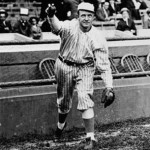
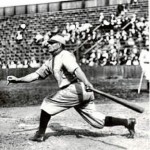 originally made baseball fans or the heads of the MLB decide that baseball needed a place to recognize their great players. The idea of a Baseball Hall of Fame began gathering steam in 1935, when members of the Clark Foundation in Cooperstown sought to revive business and tourism after the Depression. The idea took hold, and as most people know, every year new and amazing players are inducted into the Baseball Hall of Fame. While the Clark Foundation told a “white lie” to get things started, by saying that U.S. Civil War hero Abner Doubleday invented baseball in Cooperstown. The story was a phony, and they had a hard time living down the lie. The baseball officials were eager turn the idea into a reality. They backed it…so we have the Baseball Hall of Fame.
originally made baseball fans or the heads of the MLB decide that baseball needed a place to recognize their great players. The idea of a Baseball Hall of Fame began gathering steam in 1935, when members of the Clark Foundation in Cooperstown sought to revive business and tourism after the Depression. The idea took hold, and as most people know, every year new and amazing players are inducted into the Baseball Hall of Fame. While the Clark Foundation told a “white lie” to get things started, by saying that U.S. Civil War hero Abner Doubleday invented baseball in Cooperstown. The story was a phony, and they had a hard time living down the lie. The baseball officials were eager turn the idea into a reality. They backed it…so we have the Baseball Hall of Fame.
Of all those people who have entered into the Baseball Hall of Fame, it’s my guess that none were more exciting than the first ones. In fact, on January 29, 1936, the Baseball Hall of Fame elected its first members in Cooperstown, New York. The first inductees were Ty Cobb, Babe Ruth, Honus Wagner, Christy Matthewson and Walter Johnson. In preparation for the dedication of the Hall of Fame in 1939 which many people thought was the centennial of baseball, the Baseball Writers’ Association of America chose the five greatest superstars of the game as the first class to be inducted. Ty Cobb was the most productive hitter in history. Babe Ruth was both 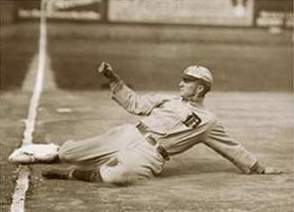
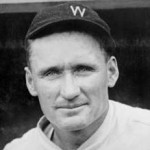 an ace pitcher and the greatest home-run hitter to play the game. Honus Wagner was a versatile star shortstop and batting champion. Christy Matthewson had more wins than any pitcher in National League history. And, Walter Johnson was considered one of the most powerful pitchers ever to have taken the mound. Today, there are 225 players, 17 managers, 8 umpires, and 28 executives and pioneers who have been elected to the Baseball Hall of Fame, and it hosts 350,000 visitors per year. It’s all about baseball.
an ace pitcher and the greatest home-run hitter to play the game. Honus Wagner was a versatile star shortstop and batting champion. Christy Matthewson had more wins than any pitcher in National League history. And, Walter Johnson was considered one of the most powerful pitchers ever to have taken the mound. Today, there are 225 players, 17 managers, 8 umpires, and 28 executives and pioneers who have been elected to the Baseball Hall of Fame, and it hosts 350,000 visitors per year. It’s all about baseball.
 Inspiration comes from many different places, but most often from an event that so strongly affects our emotions or our lives, that we feel the need to act. That is what happened to a number of students who all had something in common…Christa McAuliffe. On this day, January 28, 1986…30 years ago, after months of training and a huge national following, Christa McAuliffe entered the Space Shuttle Challenger, and went down in history as not only the first teacher chosen to go into space, but the first civilian to die on such a mission. She never made it into space, because just 73 seconds after the launch, the Challenger exploded.
Inspiration comes from many different places, but most often from an event that so strongly affects our emotions or our lives, that we feel the need to act. That is what happened to a number of students who all had something in common…Christa McAuliffe. On this day, January 28, 1986…30 years ago, after months of training and a huge national following, Christa McAuliffe entered the Space Shuttle Challenger, and went down in history as not only the first teacher chosen to go into space, but the first civilian to die on such a mission. She never made it into space, because just 73 seconds after the launch, the Challenger exploded.
The world looked on in horror, because this launch had been so widely televised and so greatly anticipated.  After the explosion, the news was broadcast over and over. We saw the horrified faces of the families of the crew, the tears of family, friends, and students of the first teacher in space, and we saw the explosion…over and over again. The heart of a nation was broken, not just because of Christa McAuliffe, but also for the families of payload specialist Gregory Jarvis; and astronauts Judith A. Resnik, mission specialist; Francis R. (Dick) Scobee, mission commander; Ronald E. McNair, mission specialist; Mike J. Smith, pilot; and Ellison S. Onizuka, mission specialist. It had been many years since the NASA space program had lost a crew, and it was the first one in flight.
After the explosion, the news was broadcast over and over. We saw the horrified faces of the families of the crew, the tears of family, friends, and students of the first teacher in space, and we saw the explosion…over and over again. The heart of a nation was broken, not just because of Christa McAuliffe, but also for the families of payload specialist Gregory Jarvis; and astronauts Judith A. Resnik, mission specialist; Francis R. (Dick) Scobee, mission commander; Ronald E. McNair, mission specialist; Mike J. Smith, pilot; and Ellison S. Onizuka, mission specialist. It had been many years since the NASA space program had lost a crew, and it was the first one in flight.
I’m sure that an accident in space did not inspire people to go into the space program, because the safety of the program immediately came into question. Nevertheless, from this tragedy…from out of the ashes of the Space Shuttle Challenger, inspiration did come. It came in the form of teachers. The students of Christa  McAuliffe…not all, but a number of them, were inspired to become teachers themselves. Each of those former students of Christa McAuliffe…kids who maybe didn’t like social studies, but because Christa McAuliffe made it interesting somehow, they did well in her class, and were inspired by her. After her passing, these inspired students decided that they wanted to pick up where she left off. They wanted to carry on with her dream. They follow her motto, “I touch the future. I teach.” One of those teachers commented that she heard people say that and wondered if they had any idea where that motto came from. Her former students knew…it was Christa McAuliffe, and her legacy lives on, 30 years after her death.
McAuliffe…not all, but a number of them, were inspired to become teachers themselves. Each of those former students of Christa McAuliffe…kids who maybe didn’t like social studies, but because Christa McAuliffe made it interesting somehow, they did well in her class, and were inspired by her. After her passing, these inspired students decided that they wanted to pick up where she left off. They wanted to carry on with her dream. They follow her motto, “I touch the future. I teach.” One of those teachers commented that she heard people say that and wondered if they had any idea where that motto came from. Her former students knew…it was Christa McAuliffe, and her legacy lives on, 30 years after her death.

